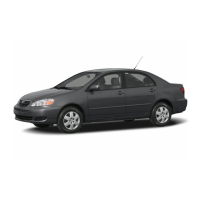
Do you have a question about the Toyota Corolla 2006 and is the answer not in the manual?
| Brand | Toyota |
|---|---|
| Model | Corolla 2006 |
| Category | Automobile |
| Language | English |
Details the function and operation of seats, seat belts, SRS airbags, and child restraint systems.
Explains the system that records data in a crash or near crash event.
Covers Toyota's limited warranties for new vehicles.
Highlights the owner's duty to ensure specified maintenance is performed.
Provides a general overview of the vehicle's instruments and controls.
Details the various components and their locations on the instrument panel.
Illustrates and explains the components of the instrument cluster.
Explains the meaning of various indicator symbols displayed on the instrument panel.
Covers the operation and care of keys, doors, and related locking systems.
Explains the types of keys, their functions, and precautions for use.
Describes the theft prevention system that uses a transponder chip in the key.
Details the function and operation of the wireless remote control system for locking/unlocking.
Explains the procedures for locking and unlocking all doors using the transmitter switches.
Details how to lock and unlock side doors using the key and the power door lock system.
Explains how to operate the power windows, including normal and automatic operation.
Provides instructions on how to open and close the trunk lid.
Explains the theft deterrent system that sounds an alarm and flashes lights when a threat is detected.
Details the procedure for opening the vehicle's hood.
Explains the function and proper use of the fuel tank cap.
Describes the operation of the electric moon roof, including sliding and tilting functions.
Covers all aspects of occupant restraint systems, including seats, belts, airbags, and child restraints.
Details the importance of proper seating and precautions for driver and front seats.
Provides precautions related to the SRS driver airbag and general seat adjustment.
Explains how to fold down the rear seatback to enlarge the trunk space.
Describes the adjustment and proper use of head restraints for safety.
Emphasizes the importance of seat belts and provides precautions for their use.
Explains the SRS front, side, and curtain shield airbags, their operation, and precautions.
Provides essential precautions and guidelines for safely installing and using child restraint systems.
Details the adjustment and use of the steering wheel and various mirrors.
Explains how to adjust the steering wheel for optimal driver position and safety.
Provides guidance on adjusting outside mirrors and awareness of convex mirror effects.
Describes how to adjust the power rear view mirrors using the control switches.
Explains how to adjust the manual anti-glare mirror to reduce headlight glare.
Details the automatic anti-glare function designed to reduce headlight glare.
Explains how to access and use the vanity mirrors located in the sun visors.
Covers the operation of headlights, turn signals, wipers, washers, and defoggers.
Details the operation of headlights, turn signals, and the daytime running light system.
Explains how to activate and use the emergency flashers to warn other drivers.
Describes how to operate the front fog lights, which activate with low beam headlights.
Explains how to adjust the brightness of the instrument panel lights using the dial.
Details the operation of the interior light switch with its different positions.
Describes how to turn personal lights on/off and the automatic light cut-off system.
Explains the operation of windshield wipers, washer fluid function, and interval adjustment.
Details how to operate the rear window defogger for clearing condensation or frost.
Covers the operation of fuel, temperature, tachometer, odometer, and service indicators.
Explains how to read the fuel gauge and the low fuel level warning light.
Details how to read the engine coolant temperature gauge and precautions for overheating.
Explains the function of the tachometer for monitoring engine speed and selecting shift points.
Describes how to read the odometer and use the two trip meters for tracking distances.
Explains how to read the outside temperature display and potential issues.
Lists various indicators and buzzers, their meanings, and the recommended actions.
Covers the ignition switch, automatic and manual transmissions, and parking brake operation.
Details the different positions of the ignition switch (LOCK, ACC, ON, START) and their functions.
Explains the operation of the automatic transmission, including the shift lock system and selector lever positions.
Describes the shift patterns, recommended shifting speeds, and clutch operation for manual transmissions.
Explains how the traction control system helps prevent wheel spin and its normal operation.
Details the VSC system's role in integrated control of braking and engine for skid prevention.
Describes the system that warns of critically low tire inflation pressure.
Explains how to apply and release the parking brake and the function of the reminder light.
Details how to set, cancel, and resume cruise control for maintaining a set speed.
Covers the operation, controls, and features of the vehicle's audio system.
Provides basic information on turning the system on/off, switching functions, and tone/balance controls.
Lists and describes specific buttons, controls, and features of the audio system.
Explains common error messages displayed by the audio system and their meanings.
Explains the random playback feature for discs and magazines.
Details the repeat function for individual tracks or entire discs.
Describes the scan function for finding tracks on a disc or discs in a magazine.
Explains how to seek radio stations or skip tracks on a compact disc.
Details how to change the display for discs containing text data.
Explains how to use the traffic announcement (TA) feature for radio broadcasts.
Describes how to tune radio stations using the knob.
Explains how to display and seek program types using the RDS feature.
Provides tips for ensuring correct audio system operation and mentions radio reception factors.
Covers the air conditioning system, including controls, settings, and operating tips.
Identifies and explains the main controls for the air conditioning system.
Explains how to adjust the fan speed for airflow within the cabin.
Details how to adjust the temperature selector to control cabin heating or cooling.
Describes the different air flow selector settings and their functions for ventilation, defogging, and defrosting.
Explains the selection between recirculating interior air and drawing in fresh outside air.
Offers tips for maximizing the effectiveness of the air conditioning system in various conditions.
Explains how to open or close the side vents for airflow control.
Describes the location and function of the air conditioning filter.
Provides step-by-step instructions for inspecting and replacing the air conditioning filter.
Covers various other equipment and accessories found in the vehicle.
Details how to reset the hour and minutes for the vehicle's clock.
Explains the use of the cigarette lighter and the portable ashtray.
Describes the purpose and usage of the vehicle's power outlets for accessories.
Explains how the compass indicates direction and potential causes of deviation.
Provides instructions on how to open the glove box door.
Details how to use various auxiliary storage boxes located in the vehicle.
Explains how to access the rear console box for storage.
Describes the design and use of cup holders for securing drinks.
Provides guidance on using the correct size floor mats and securing them with clips.
Covers vital information regarding vehicle operation, fuel, and safety before driving.
Offers tips for gently breaking in a new vehicle to ensure future economy and longevity.
Details fuel type requirements, octane ratings, and fuel quality considerations.
Explains the system that stops fuel supply to the engine in case of collision or stall.
Provides advice for driving your Toyota in other countries, including fuel and registration.
Describes the function of the catalytic converter and precautions for its use and maintenance.
Highlights crucial safety and health precautions related to engine exhaust gases.
Explains normal engine oil consumption, its causes, and the importance of checking oil levels.
Notes the use of iridium- tipped spark plugs and recommended usage.
Details the hydraulic brake system, including its dual sub-systems and warning lights.
Explains the function of the ABS system and its warning light, emphasizing safe driving practices.
Describes the warning noise from brake pads when replacement is needed.
Explains the importance and location of the Vehicle Identification Number (VIN).
Describes the purpose and design of theft prevention labels on the vehicle.
Warns against modifying the suspension/chassis with kits that can affect handling.
Illustrates and explains the various symbols and markings found on standard tires.
Covers total load capacity, seating capacity, towing capacity, and cargo capacity limits.
Provides essential precautions for stowing cargo and luggage to ensure vehicle balance and safety.
Discusses the characteristics and differences between summer, all-season, and snow tires.
Covers essential procedures and tips for starting the engine and driving the vehicle.
Lists the crucial checks to perform before entering and starting the vehicle.
Provides a normal starting procedure for both manual and automatic transmissions, including what to do if the engine stalls.
Offers advice for driving safely in diverse conditions like crosswinds, bumps, and wet roads.
Provides essential tips for winter driving, including coolant, battery, locks, and washer fluid.
Explains the precautions and procedures for dinghy towing, especially with automatic transmissions.
Details the effects of trailer towing on vehicle performance, handling, and the importance of weight limits.
Offers tips on improving fuel economy and extending vehicle lifespan through proper maintenance and driving habits.
Covers critical procedures for various emergency situations, from starting issues to towing.
Provides steps for diagnosing and resolving issues when the vehicle will not start.
Details the immediate steps to take if the engine stalls while the vehicle is in motion.
Addresses potential issues when engine speed cannot be increased, particularly related to electronic throttle control.
Provides a step-by-step guide on what to do if the engine overheats, including safety precautions.
Offers a detailed guide on how to safely change a flat tire, including tool usage and precautions.
Provides instructions on how to free a vehicle stuck in snow, mud, or sand, including traction control system usage.
Explains the recommended methods and precautions for towing the vehicle correctly to avoid damage.
Details how to use the shift lock override button if the selector lever cannot be moved from Park.
Advises on obtaining replacement keys and the process if keys are locked inside the vehicle.
Provides guidance on preventing corrosion and maintaining the vehicle's appearance.
Details common causes of corrosion and highlights the importance of regular washing and timely repair.
Offers tips and procedures for washing and waxing the vehicle to maintain its finish.
Provides instructions for cleaning the vinyl and leather upholstery, carpets, and other interior surfaces.
Covers essential maintenance requirements, general care, and when to seek professional repair.
Emphasizes the owner's responsibility for regular maintenance to ensure vehicle performance and warranty coverage.
Lists day-to-day care practices important for proper vehicle operation and safety.
Highlights clues and symptoms that may indicate a need for vehicle adjustment or repair.
Explains the role of the OBD system and the malfunction indicator lamp in emission inspections.
Introduces do-it-yourself maintenance, including engine compartment overview and safety precautions.
Illustrates and identifies key components located in the engine compartment for the 1.8L engine.
Shows the locations of the fuse boxes and provides a guide to identifying fuses.
Outlines essential safety precautions to prevent accidental injury when performing DIY maintenance.
Details the correct and safe procedure for positioning the jack to lift the vehicle for wheel changing.
Lists necessary parts and tools required for performing various do-it-yourself maintenance tasks.
Covers DIY checks and maintenance procedures for the engine and chassis components.
Provides instructions on how to correctly check the engine oil level and add oil if necessary.
Explains how to check the engine coolant level and the proper type of coolant to use.
Advises on checking the condition of the radiator and condenser for cleanliness and proper function.
Details how to check the brake fluid level and the importance of using the correct fluid.
Explains how to check the power steering fluid level and the correct type of fluid to use.
Provides instructions and tips for checking tire inflation pressure accurately and regularly.
Guides on checking tire tread wear indicators, identifying tire damage, and when replacement is necessary.
Explains the importance and procedure for rotating tires to equalize wear and extend tire life.
Provides guidance on selecting and installing snow tires and chains for winter driving conditions.
Details the procedure for replacing wheels, emphasizing the importance of using correct size and type.
Offers precautions regarding the handling, maintenance, and balancing of aluminum wheels.
Covers DIY maintenance for electrical components like the battery, fuses, and washer fluid.
Outlines essential safety precautions and emergency measures when checking the vehicle battery.
Provides critical precautions for safely recharging the vehicle battery, emphasizing ventilation and slow charging.
Details how to check and replace fuses, including using the pull-out tool and selecting the correct amperage.
Explains how to add washer fluid, including the correct type for different climates.
Provides a guide and table for replacing various exterior and interior light bulbs.
Lists key specifications for the vehicle, including dimensions, weights, engine, fuel, tires, and fuses.
Provides detailed dimensions and weight specifications for the vehicle.
Lists specifications related to the vehicle's engine, including type, bore, stroke, and displacement.
Details fuel type requirements, octane ratings, and fuel tank capacity requirements for optimal performance.
Provides essential service specifications for the engine, including valve clearance, spark plugs, and oil/coolant types.
Details tire size, cold inflation pressure, wheel size, and torque specifications.
Provides a diagram and list of fuse types, their amperage ratings, and the circuits they protect.
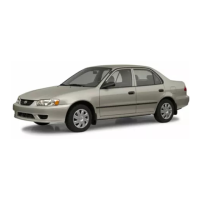
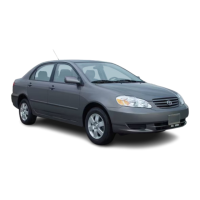


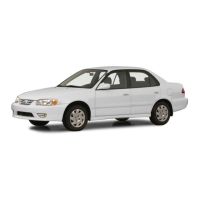

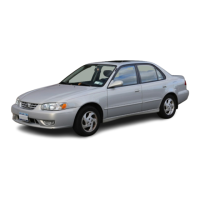
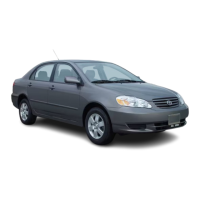


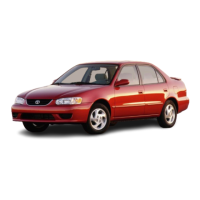
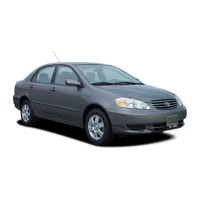
